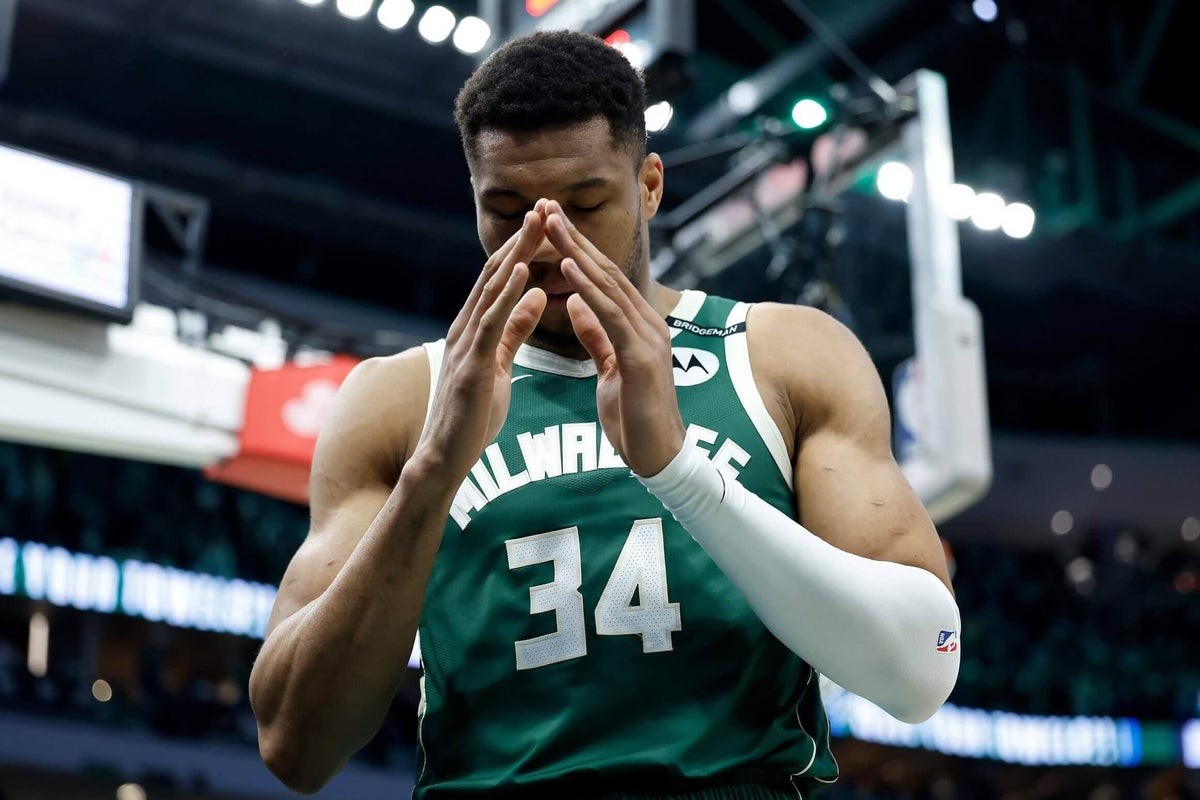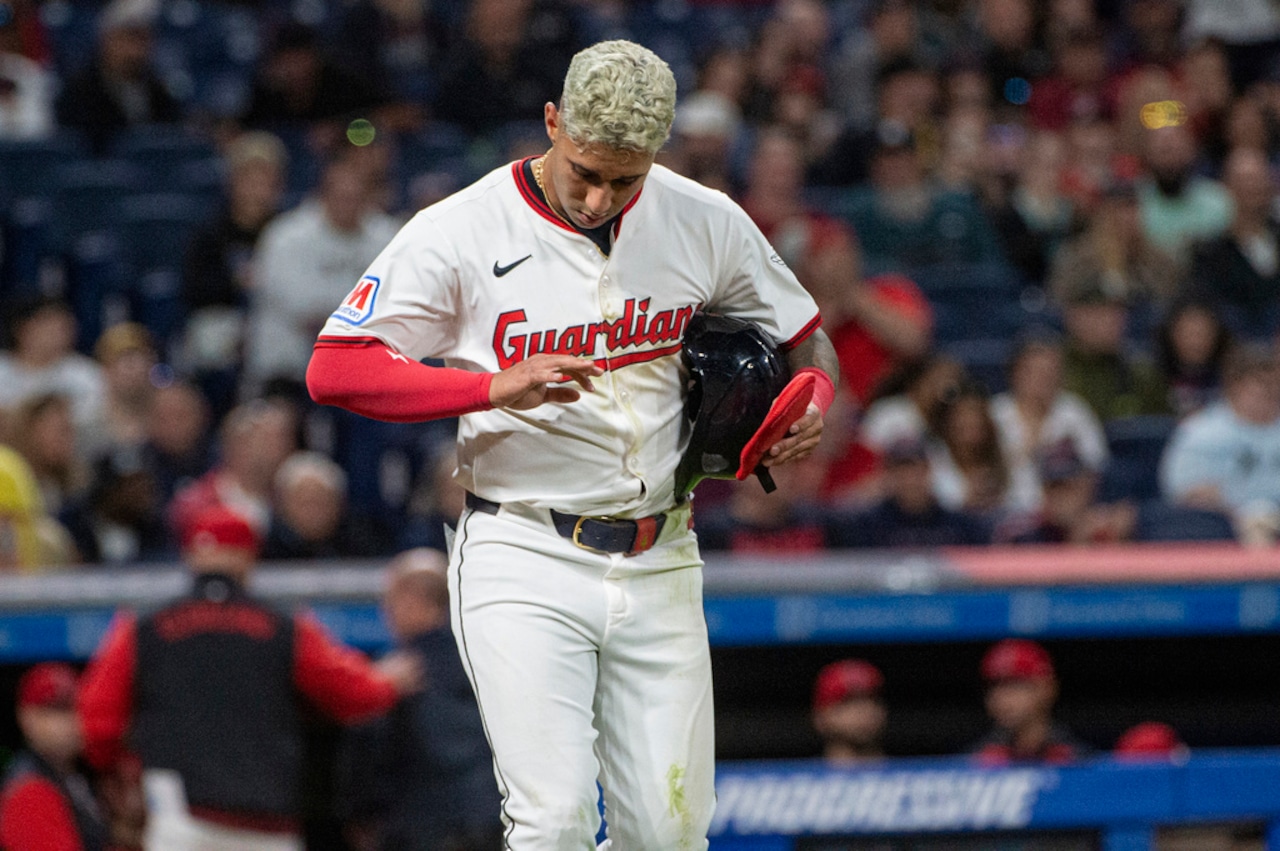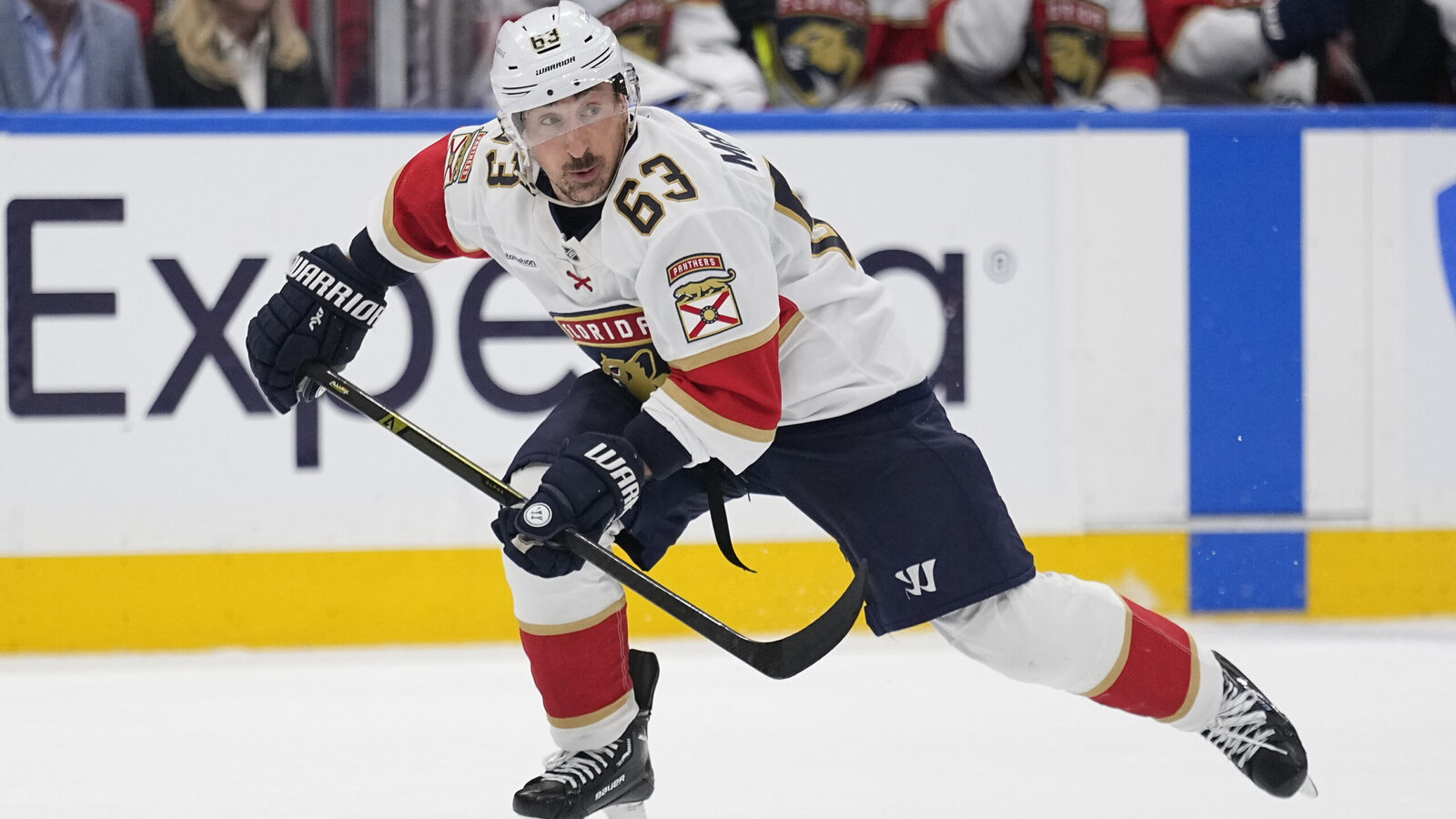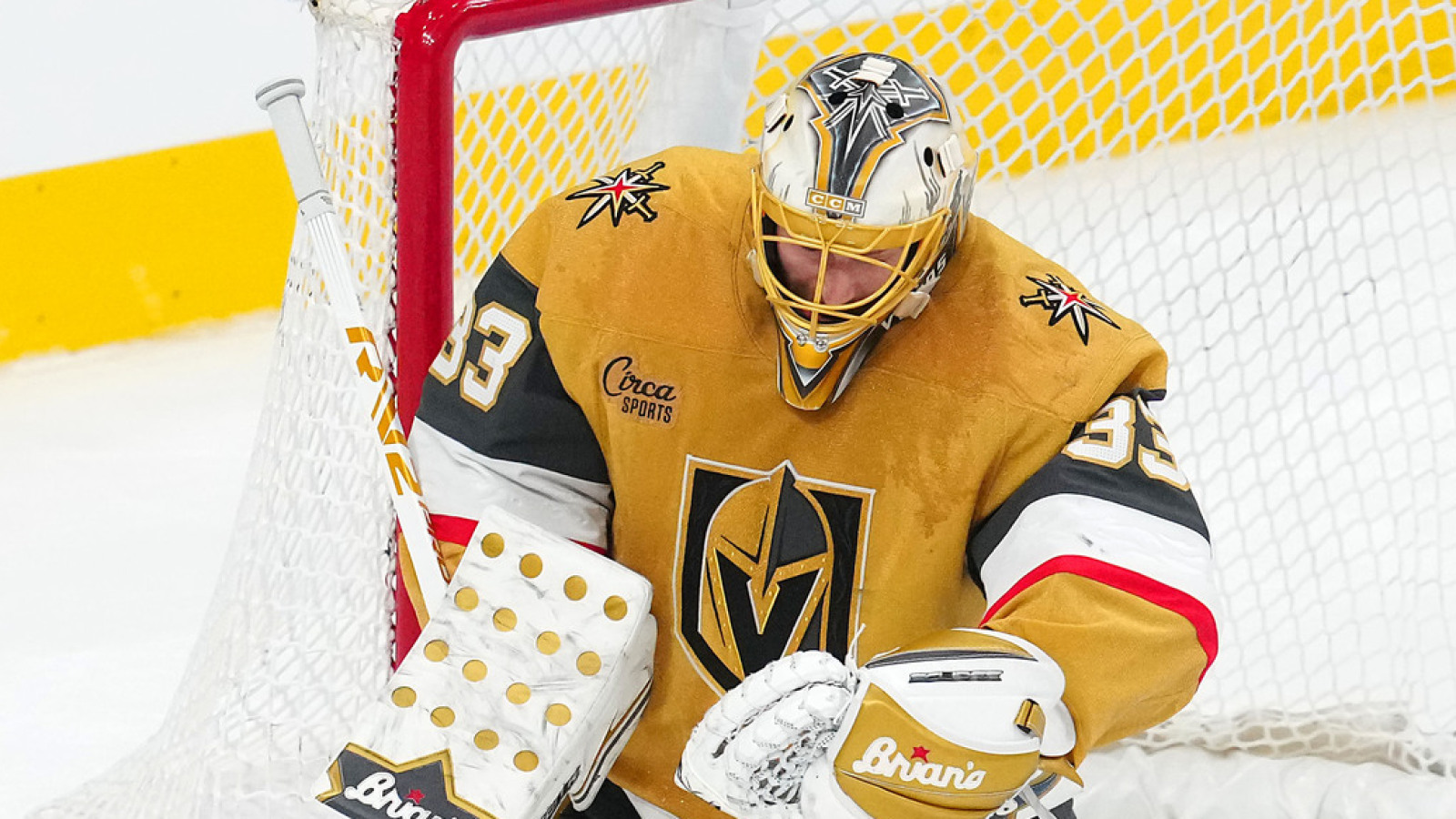
When Damian Lillard collapsed to the Fiserv Forum floor in Game 4 of the Milwaukee Bucks’ first-round series against the Indiana Pacers, the team’s future changed dramatically.
Any plan or any idea the organization had or was considering for the 2025-26 season needed to be re-evaluated and worked through again. With a diagnosis of a torn left Achilles tendon for Lillard, the Bucks have to move forward with the belief that he will end up missing most of next season, and that will drastically hinder their ability to compete for an NBA title.
Advertisement
For the first time since 2018, the Bucks will likely be unable to build a roster that expects to compete for a championship, a level that franchise cornerstone Giannis Antetokounmpo has come to expect as a perennial MVP candidate.
With that reality, how can the Bucks pitch Antetokounmpo on their path forward? One potential direction could be a gap year from contention to better position the organization to contend moving ahead and accepting that next season may not be the season Milwaukee wins its third NBA championship.
Let’s look at how the Bucks could make the idea palatable for one of the world’s best basketball players.
Gap-year accomplishments count the same
There is no point in sugarcoating it: Lillard’s left Achilles tear seriously compromises any chance the organization had to build a championship-contending roster for next season. That is the reality. It’s a terrible injury, and even with an unprecedented recovery, Lillard will miss most of next season.
But that doesn’t mean next season has to be a total waste.
Other than Tim Duncan, all of the great single-franchise players went through gap years. Kobe Bryant led the league in scoring twice in the gap years between his fourth and fifth championships with the Los Angeles Lakers. A 32-year-old Steph Curry led the league in scoring and finished third in MVP in the 2020-21 season as the Golden State Warriors waited for Klay Thompson to return from injuries.
While it may not end up being realistic to win an NBA championship, this team could put Antetokounmpo in a position to win his third NBA MVP.
To close the season, after Lillard’s deep vein thrombosis diagnosis, Bucks head coach Doc Rivers made Antetokounmpo the point guard and built the entire offense’s structure around him. The numbers were eye-popping. In the six games Antetokounmpo played during the season-ending eight-game win streak, he averaged 31.8 points, 12.0 rebounds and 11.8 assists per game.
Advertisement
While those assist numbers were buoyed by a career-high 20-assist effort against the Philadelphia 76ers, that type of performance will be far more possible because of how much the ball will be in Antetokounmpo’s hands. During that time last season, Antetokounmpo’s usage rate was only 36.8 percent, according to Cleaning the Glass. In the 2022-23 season, his usage rate was 39.1 percent. So, there is some wiggle room to lean further into an even more heliocentric approach around Antetokounmpo.
Without Lillard and limited assets, it might be the only viable way to play next season offensively, and it could lead to monster numbers for Antetokounmpo. With an increase in usage and more playmaking responsibility, Antetokounmpo could lead the league in scoring for the first time in his career. Or maybe he could average a triple-double. And if he does either of those things while leading the Bucks to a playoff spot — remember, it only took 44 wins to clinch the sixth seed in the East this season — it may lead to his third NBA MVP.
Antetokounmpo wants to compete at the highest level and make deep playoff runs, but if that is not going to be possible for the Bucks next season, an MVP would make him the 10th player in NBA history to win three, and it would be a worthy consolation prize.
Building a young(er) core
Like Antetokounmpo, Lillard will be paid $54.1 million next season. Despite missing most of the season, the veteran point guard will be taking up 35 percent of next season’s $154.6 million salary cap, and the Bucks’ team-building opportunities will be somewhat limited this offseason.
They will not have cap space, but the Bucks will have multiple salary-cap exceptions, and that will give them a chance to retain many of the players that showed promise at the end of last season.
Advertisement
While Game 5 ended in infamy with a ball slipping through his hands and out of bounds in the waning moments of overtime, Gary Trent Jr. performed well in the postseason for the Bucks, especially when getting a greater opportunity to play off of Antetokounmpo. Trent will be looking for a raise in the offseason, but the team could use the $14.1 million non-taxpayer midlevel exception to retain him. In addition to Trent, the Bucks also have AJ Green on a non-guaranteed contract for next season, and they can bring him back next season.
At point guard, the Bucks have two young players who popped in the final few months of the regular season as Lillard missed extended time. In the playoffs, the Bucks leaned on Kevin Porter Jr. to help with playmaking and scoring. He struggled in the first few games, which were his first playoff games in the NBA, but got more comfortable as the series progressed. Ryan Rollins is not quite as aggressive and assertive offensively and didn’t find the same level of success as Porter in his first playoff series, but he also didn’t seem to be afraid of the moment.
While Porter has a player option and can become an unrestricted free agent, Rollins is a restricted free agent. Both players had their moments in Milwaukee last season, but the Bucks will have the ability to spend some money on retaining both and plenty of opportunity for both players to solidify themselves as NBA rotation players next season.
If they manage to retain all four players, the guards on the roster would then be:
- Porter, a 25-year-old playmaking threat who can excel in the two-man game with Antetokounmpo
- Rollins, a soon-to-be 23-year-old defense-first point guard who hit 40 percent of his 3-pointers
- Trent, a 26-year-old sharpshooter who showed up in the biggest moments of the postseason
- Green, a deadly 42-percent 3-point shooter who excelled in the two-man game with Antetokounmpo and turns 26 early this fall
All four players have shown an ability to play tough defense, which was a problem last season, especially at the point of attack. They also played well in the switch-heavy scheme that Rivers decided to deploy against the Pacers.
All four were able to prove their worth this past season, but with their respective age and experience levels, there is a chance they can perform better next season and grow into better players with more game reps. Playing those four players heavy minutes next season also will allow them to improve dramatically.
The rest of the roster would feature older players, especially if the team finds a way to bring back both Bobby Portis and Brook Lopez, but there are other opportunities to get younger and more athletic. Jericho Sims, 26, performed well after the trade deadline, and the Bucks could choose to re-sign him. His ability to affect games with Portis suspended for 25 games showed that the Bucks can make the athletic, rim-running, switch-heavy big man archetype work if they want to pursue that type of player in free agency.
Advertisement
Even if the Bucks choose to retain many of their free agents, there will almost certainly be open roster spots to fill with minimum contracts that the Bucks choose to use on young, unproven players who could help create even more young depth pieces.
Better base for future contention
With Lillard out, the Bucks are going to be at a talent deficit in comparison to the NBA’s best teams, but that doesn’t mean they’ll be at a deficit to the whole league. It will require a gargantuan effort from Antetokounmpo, but his presence can keep the Bucks around .500 next season, and that could lead to individual accolades. But in the Eastern Conference, that might also be enough to keep the Bucks in the top six spots and guarantee a playoff spot.
Anything can happen in the postseason. If Lillard can find a way to return near the end of next season, maybe the Bucks can catch lightning in a bottle. However, that part does not matter as much in the gap year set-up because getting through the season puts the Bucks in a better position to build a contender after next season.
Getting through to the summer of 2026 would give the Bucks another salary cap increase. With that increase projected at 10 percent, the salary cap for the 2026-27 season would be roughly $170 million and the luxury tax line would be up above $205 million. Lillard (a $58.5 million player option) and Kyle Kuzma ($20.4 million) would be in the final year of their contracts and may end up being more tradable, especially if the Bucks point guard can get his first game reps out of the way at the end of next season and Kuzma finds more comfort in his second season in Milwaukee.
On top of that, the Bucks will have the rights to a first-round pick in the 2026 NBA Draft and the rights to their 2031, ’32 and ’33 first-round picks, which means they could trade two of those three as well. That gets the organization closer to having enough first-round picks to make a sizable trade to acquire more talent. And if they managed to develop some of the younger talent on the roster, they could have pieces to add to a trade as well.
The injury to Lillard is something the Bucks could have never predicted, so they will have to think about about multiple approaches to this upcoming offseason. They must be ready to pivot if something they bring to Antetokounmpo does not sound attractive to him, but the gap year would give the organization a year to assemble better assets and talent to try to get back to competing for championships in the future.
(Photo of Giannis Antetokounmpo: John Fisher / Getty Images)



